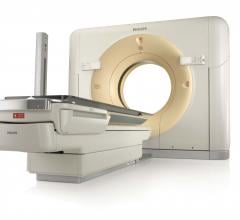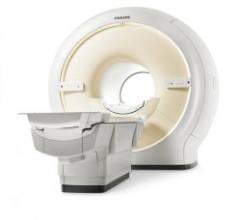If you enjoy this content, please share it with a colleague
Philips
RELATED CONTENT
October 13, 2016 — Philips announced that it will be displaying a variety of solutions aimed at increasing diagnostic ...
Philips Healthcare featured its latest integrated imaging and treatment planning solutions for radiation oncology at the American Society for Therapeutic Radiology and Oncology’s (ASTRO) 58th Annual Meeting, Sept. 25-28 in Boston. Designed to fit the unique needs of radiation oncology clinicians and patients, these solutions have been developed to put more control in the hands of the clinician, with the intent to improve workflow and operational efficiencies, drive procedure accuracy and ultimately improve care.
The last two decades have brought a series of changes in medicine, technology and healthcare legislation that have impacted the field of diagnostic imaging and the role of the radiologist. Coupled with these changes, imaging volume is declining1 due to costs as well as concerns over patient radiation exposure.2 This environment often makes it challenging for radiology groups to protect their financial performance and ensure they deliver high-quality studies and readings. Fortunately, advances in imaging and information technology have emerged, helping radiologists increase the utilization of diagnostic imaging and moving the radiologist into a more central role in integrated patient care.3
The most recent big advances in magnetic resonance imaging (MRI) technology have been on the software side, enabling faster contrast scans, greatly simplified cardiac imaging workflows and allowing MR of the lung.
September 26, 2016 — IBA (Ion Beam Applications S.A.) and Philips announced that they are stepping up their combined ...
The most recent advances in magnetic resonance imaging (MRI) technology have been on the software side, enabling faster ...
Advanced imaging and hybrid modalities, such as computed tomography (CT), magnetic resonance imaging (MRI), positron emission tomography (PET)/CT and single-photon emission computed tomography (SPECT)/CT are showing significant growth and will continue to do so, despite some slowdown in overall imaging volume due to the changing reimbursement landscape.
For all the benefits of medical diagnostic imaging, radiation exposure to both the patient and the operator remains a major safety concern. Various studies have illustrated the harmful effects of excess radiation dose, but much is still uncertain as to its precise impact.
The past decade has witnessed significant developments in ultrasound technologies ranging from portable devices, wireless transducers to 3-D/4-D ultrasound imaging and artificial intelligence. Researchers and scientists are endeavoring on developing technologies that simplify diagnostic procedures, improve efficiency of clinicians, and enhance image quality.
Alexandria VA Medical Center (VAMC) and Philips announced that the VAMC’s Pineville, La., facility will be the first VA site to adopt the Philips Ingenia 1.5T magnetic resonance imaging (MRI) with in-bore Ambient Experience technology.


 October 13, 2016
October 13, 2016 







